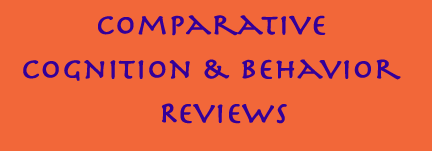 |
||
|
2006
|
Volume
1:53-76 |
|
Time, Place and Content
Jonathon
D. Crystal
University of Georgia
| The goal of this article is to integrate information about basic mechanisms of time perception with research on time-place learning and research on the discrimination of what, when, and where (WWW). Several lines of evidence suggest that the psychological representation of time is nonlinearly related to physical estimates of time. These data prompt consideration of the proposal that interval timing is mediated by multiple, short-period oscillators. A multiple oscillator representation of time may be used to code the time of occurrence of events. These time-stamps for events, together with information about where the events occurred, may represent a promising direction for development of a quantitative, mechanistic theory of episodic-like memory in animals. |
•
Full-text PDF |
|
Published by the Comparative Cognition Society